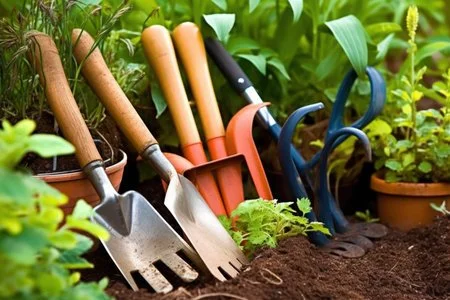September is a transitional month for gardeners, marking the shift from summer to fall. It's the perfect time to prepare your garden for the cooler months ahead while still enjoying the late-season blooms and harvest. To help you make the most of your garden this September, here's a comprehensive gardening checklist:
1. Harvesting:
Continue harvesting summer vegetables like tomatoes, peppers, cucumbers, and beans as they ripen.
Start harvesting cool-season crops such as kale, spinach, and lettuce when they reach the desired size.
Collect seed and herbs for drying.
2. Pruning and Deadheading:
Deadhead spent flowers to encourage continued blooming in perennials and annuals.
Trim back overgrown or leggy plants to maintain their shape and promote new growth.
Prune and shape shrubs as needed.
3. Planting:
Consider planting perennials, shrubs, and trees as the cooler weather is less stressful for new plantings.
Plant spring-blooming bulbs like tulips, daffodils, and crocuses for a burst of color next year.
4. Soil Care:
Add compost to your garden beds to enrich the soil and improve its structure.
Mulch around the base of plants to retain moisture, regulate soil temperature, and prevent weeds.
5. Watering and Water Features:
Adjust your watering schedule to accommodate decreasing daylight and cooler temperatures.
Water deeply and less frequently to encourage deep root growth in trees and shrubs.
Start covering water features with netting to collect falling leaves.
Clean any bird feeders.
6. Pest and Disease Management:
Keep an eye out for late-season pests like aphids, spider mites, and cabbage worms. Use organic controls if necessary.
Remove and dispose of any diseased plant material to prevent the spread of diseases.
7. Lawn Care:
Continue mowing your lawn, gradually reducing the height as the grass growth slows down.
Aerate, fertilize and overseed your lawn to repair bare patches and promote healthy growth.
8. Garden Cleanup:
Clear out spent annuals and vegetable plants, composting what you can.
Cut back perennials that have finished blooming and are beginning to die back.
Remove any debris, fallen leaves, and weeds to reduce overwintering pests and diseases.
Turn over your compost pile one last time
Check house plants for pests and start cleaning the plants and moving indoors.
Bring in any clay pots.
9. Bulb Care:
Lift and divide overcrowded spring-flowering bulbs like daffodils and irises.
Store tender bulbs like dahlias and gladiolus in a cool, dry place after digging them up.
10. Planning for Fall:
Start planning your fall garden, considering cool-season annuals and perennials.
Purchase and stock up on necessary supplies for fall and winter gardening projects.
September is a pivotal month for gardeners, offering the chance to both enjoy the last fruits of summer and prepare for the beauty and productivity of the fall garden. By following this September gardening checklist, you'll ensure your garden remains vibrant and well-maintained as you transition into the new season. Happy gardening!

